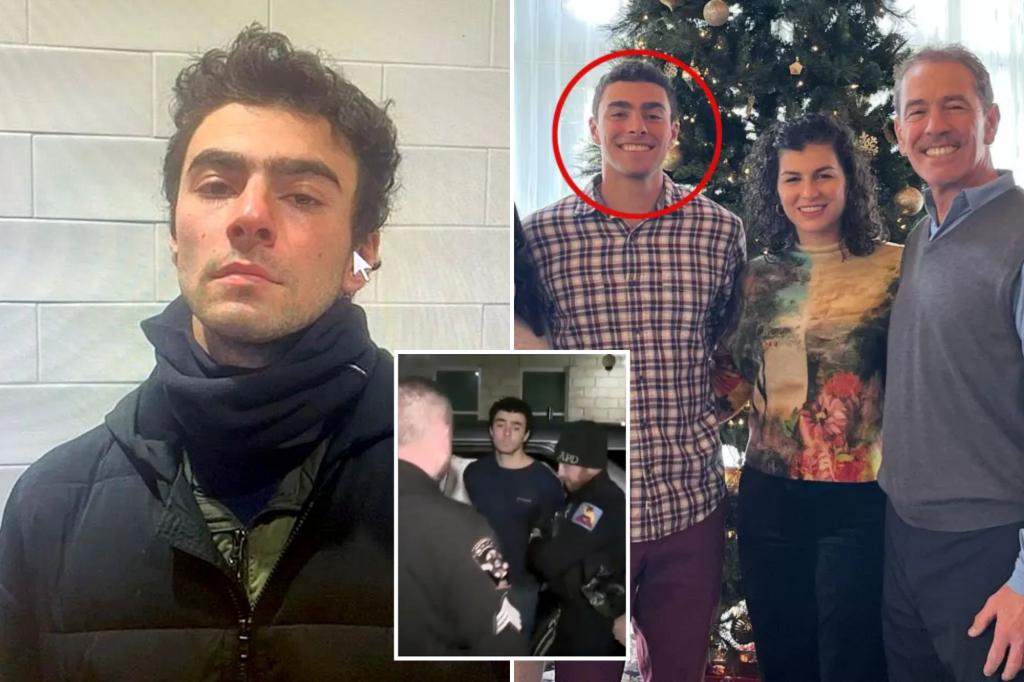The perplexing case of Brian Thompson’s murder took a dramatic turn with the apprehension of Luigi Mangione, a 26-year-old Ivy League graduate hailing from a prominent Maryland real estate family. Mangione was captured in an Altoona, Pennsylvania McDonald’s, identified by an observant employee who recognized him from publicized images of the suspect in Thompson’s shooting. Upon his arrest, Mangione was found in possession of a ghost gun, masks, and writings purportedly linking him to the brazen ambush outside a Manhattan hotel where Thompson, CEO of UnitedHealthcare, was killed. This arrest brought a semblance of closure to a case shrouded in mystery, while also raising a plethora of questions about motive and the suspect’s troubled past.
Prior to the shooting, Mangione’s family had reported him missing, highlighting a disturbing pattern of disconnection and potential mental health struggles. His mother filed the missing person report on November 18th, potentially from San Francisco, though Mangione’s last known address was in Honolulu. The timeline of his disappearance intertwined with a recent back surgery, a detail that emerged as potentially crucial in understanding the motive behind Thompson’s murder. Former classmates revealed that Mangione had lost contact with his family following the surgery, prompting his family to circulate messages seeking information about his whereabouts.
Mangione’s struggles with back pain appeared to be a significant factor in his life, potentially fueling resentment towards the medical industry. A former roommate in Hawaii recounted Mangione’s chronic back issues, describing the debilitating pain that even a simple surfing lesson exacerbated, leaving him bedridden. The surgery, involving the insertion of screws into his spine, seemingly left a lasting impact, both physically and emotionally. This medical history, coupled with the discovery of books on his Goodreads account focusing on chronic back pain and the “back pain industry,” suggests a potential connection between his personal experiences and his alleged targeting of Thompson, a prominent figure in the healthcare insurance sector.
The investigation into a possible motive continues, but the emerging narrative paints a picture of a young man grappling with physical pain and perhaps harboring resentment towards the medical establishment. The X-ray image on Mangione’s social media account, depicting pins in his spine, further underscores the profound impact of his back issues on his life. While the connection between his personal struggles and the targeted killing of a healthcare CEO remains speculative, investigators are diligently pursuing this line of inquiry, hoping to unravel the complex web of circumstances that led to this tragic event.
The timeline of events leading up to the shooting reveals a disturbing descent into isolation and potential disillusionment. Mangione’s disappearance, followed by his apprehension in possession of weapons and incriminating materials, points towards a premeditated act. His academic achievements and privileged background contrast starkly with the circumstances surrounding his arrest, raising questions about the trajectory of his life and the factors that may have contributed to this violent act. The discovery of his writings holds the potential to shed light on his mindset and the specific grievances he may have held against Thompson or the healthcare industry in general.
As the legal proceedings unfold, investigators will continue to piece together the fragmented puzzle of Mangione’s motives. The evidence gathered thus far suggests a complex interplay of personal struggles, potential resentment towards the medical industry, and a targeted act of violence. While the full extent of his motivations may never be fully known, the emerging details surrounding his life offer a glimpse into the troubled path that led him to this tragic juncture. The case serves as a stark reminder of the importance of addressing mental health concerns and the potential consequences of untreated pain and resentment.

